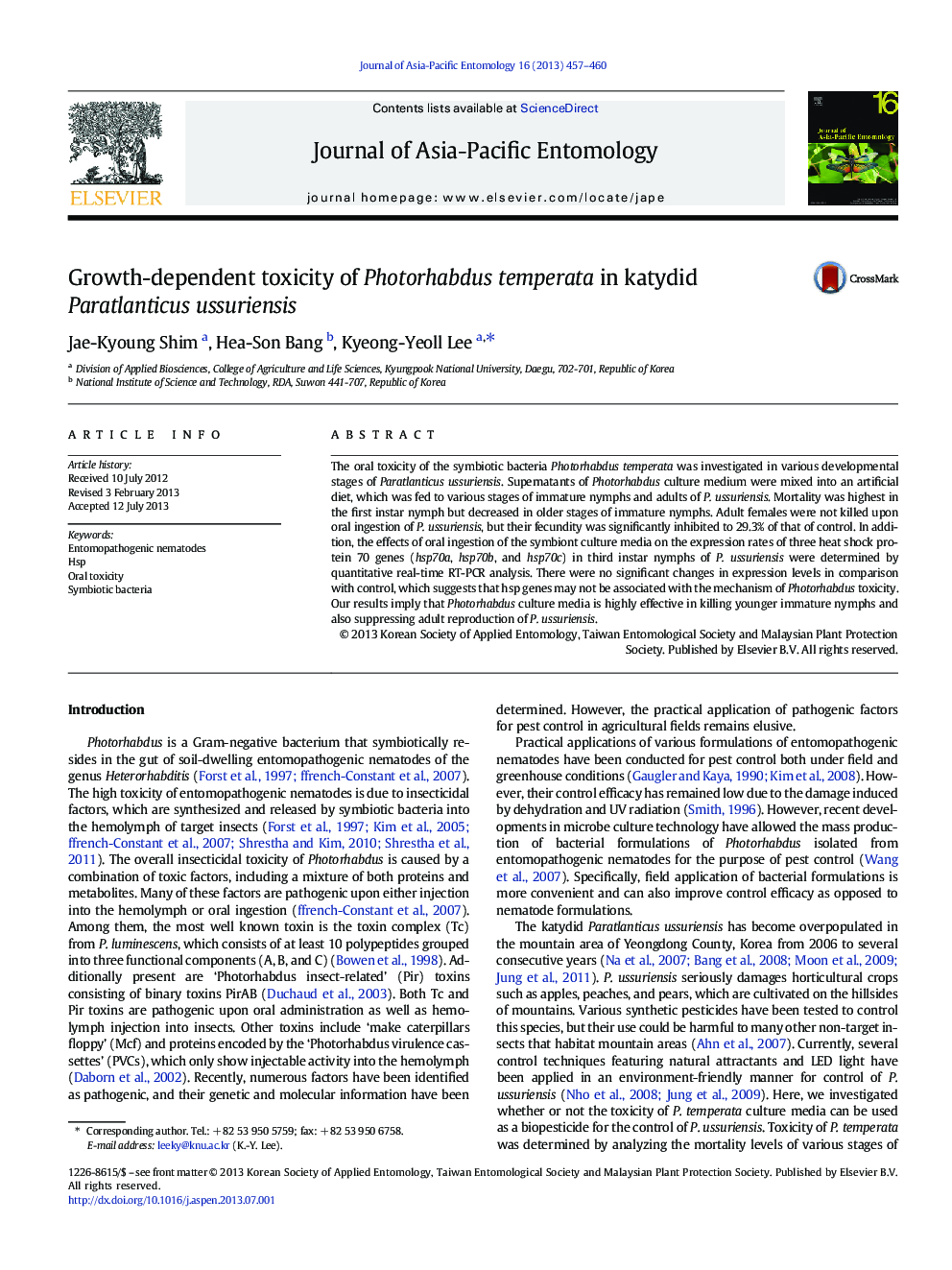| Article ID | Journal | Published Year | Pages | File Type |
|---|---|---|---|---|
| 4524502 | Journal of Asia-Pacific Entomology | 2013 | 4 Pages |
•The oral toxicity of Photorhabdus temperata was investigated in Paratlanticus ussuriensis.•Mortality was highest in the first instar nymph but decreased in older developmental stages.•Adult fecundity was significantly inhibited by oral ingestion.•However, hsp expression levels did not changed by toxin ingestion.•Our results imply that Photorhabdus culture media is highly effective to control P. ussuriensis.
The oral toxicity of the symbiotic bacteria Photorhabdus temperata was investigated in various developmental stages of Paratlanticus ussuriensis. Supernatants of Photorhabdus culture medium were mixed into an artificial diet, which was fed to various stages of immature nymphs and adults of P. ussuriensis. Mortality was highest in the first instar nymph but decreased in older stages of immature nymphs. Adult females were not killed upon oral ingestion of P. ussuriensis, but their fecundity was significantly inhibited to 29.3% of that of control. In addition, the effects of oral ingestion of the symbiont culture media on the expression rates of three heat shock protein 70 genes (hsp70a, hsp70b, and hsp70c) in third instar nymphs of P. ussuriensis were determined by quantitative real-time RT-PCR analysis. There were no significant changes in expression levels in comparison with control, which suggests that hsp genes may not be associated with the mechanism of Photorhabdus toxicity. Our results imply that Photorhabdus culture media is highly effective in killing younger immature nymphs and also suppressing adult reproduction of P. ussuriensis.
Graphical abstractOviposition rate of P. ussuriensis was inhibited by oral ingestion of Photorhabdus culture media (Pt).Figure optionsDownload full-size imageDownload as PowerPoint slide
